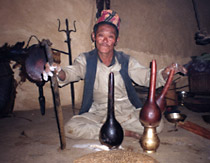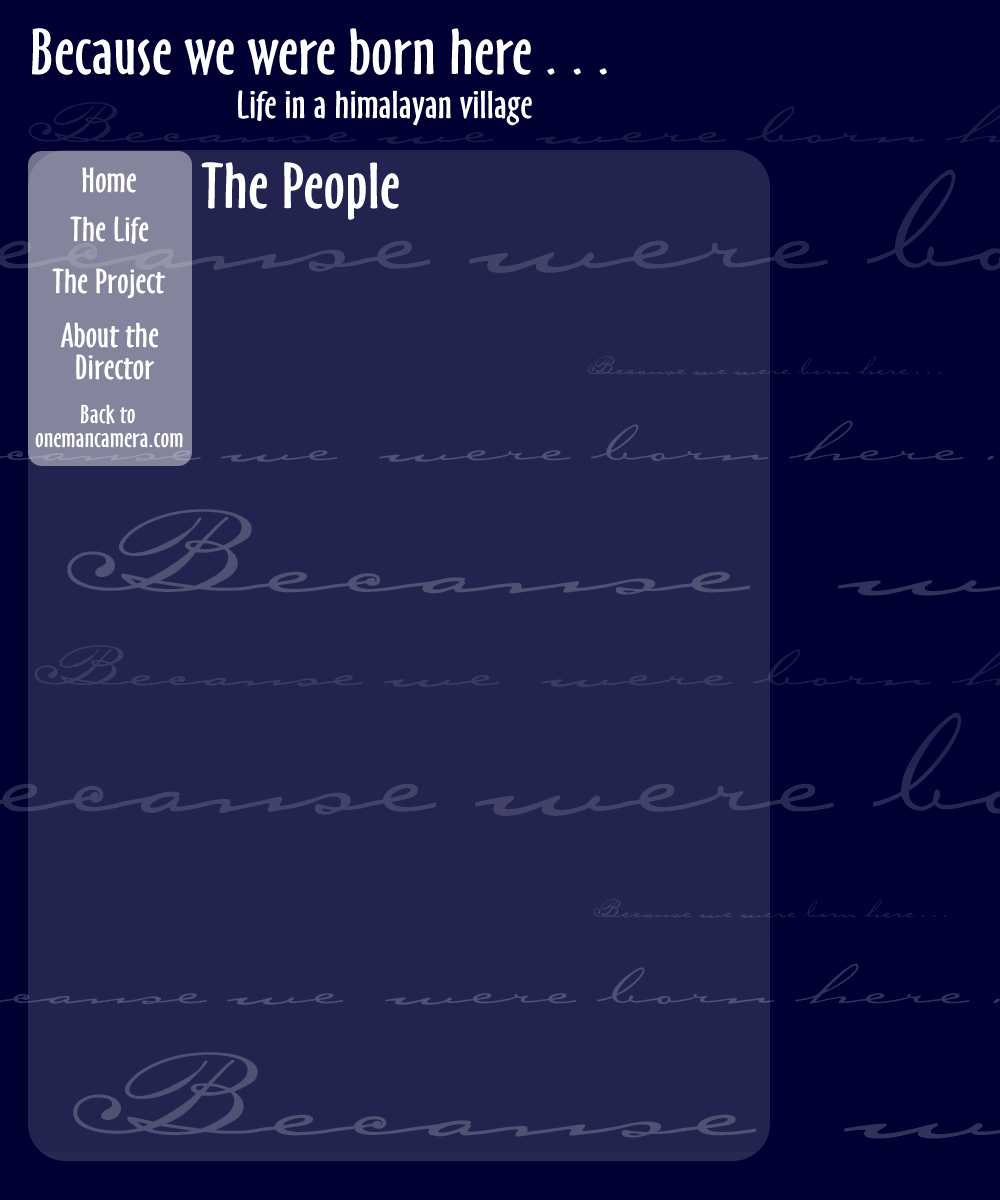|
When Nepal opened its doors to foreign visitors in the 1950s, not only did an eventual flood of tourists arrive searching for their own personal Shangri-La, development agencies came on a mission to build their own visions of Shangri-La. The impact on Nepal as a whole has been remarkable, not always positive, but undeniably substantial. Construction of transportation infrastructure, the East-West highway, schools, health clinics, telecommunications and industry has been most felt in areas where political power has been concentrated: Kathmandu, the central districts, and those bordering the plains of India. Remote and often hilly northern districts, including where Benchong is, have seen much less “progress” in the areas of development listed above. The history of the Rai is one mostly written by outsiders. Illiteracy is rampant throughout Nepal -- but especially in the remote, underdeveloped areas where the Rai have traditionally settled. This project itself is another “outside” effort to record the living history of a people who maintain mostly oral traditions. Few texts tell how the Rai came to settle in eastern Nepal and how they relate to the other clans and ethnic groups. Even the legends of their own heroes and villains are complicated by differences in the tales told by the elders from village to village. While the origin of the name of the village, Benchong, is unclear, some villagers have said that it comes from the Rai word ben , meaning “finished” or “completely used up.” Legend has it that there was once a great battle in the area between warring tribes, and everything was destroyed and everyone was killed, or “finished” – ben. No one can say how old the village is, but estimates from villagers ranged to 300 years or more. Benchong has always been a majority Khulung Rai village, with only a few “immigrant” Hindu families of the Kami, or blacksmith, caste living among them. Traditionally Kami families have settled with the Rai, using their skills for income, while farming the cheaper lands that would not be available to them in the high caste Brahmin and Chetri communities at lower elevations.
We like this village because we were born here. Our parents raised us here. We play with all the brothers and sisters here in this village. We worked here. We wandered around with them here. We like it here. We feel very good here. We like this village. A village is, after all, not the sum of its conveniences, but rather the sum of its people. Benchong, while lacking the former, is rich in humanity. |
|
|
 Historically
the Rai are considered to be part of one of the two main subdivisions
of the indigenous Kirati people (the other being Limbu). The Kirati
people are known for their fierce bravery, their quick tempers, and
their penchant for home brewed alcohols. Although recent recruitment
has declined, since the 19th century the British, Indian and Royal Nepalese
armies have employed young Rai villagers as Gorkha soldiers famed for
their Khukuri (curved blade) knives -- the same knives worn by nearly
every male Rai villager of age.
Historically
the Rai are considered to be part of one of the two main subdivisions
of the indigenous Kirati people (the other being Limbu). The Kirati
people are known for their fierce bravery, their quick tempers, and
their penchant for home brewed alcohols. Although recent recruitment
has declined, since the 19th century the British, Indian and Royal Nepalese
armies have employed young Rai villagers as Gorkha soldiers famed for
their Khukuri (curved blade) knives -- the same knives worn by nearly
every male Rai villager of age. There
is no post office, no health service (both are at least an hour’s
walk away), and, in fact, the only government building in Benchong is
the school. There is a small store in the form of an upright wooden
chest at the home of the village chief, Kumba Man Rai. There people
can buy tea, small candies, pens, paper, flip flops, biscuits, cigarettes,
matches, batteries, and occasionally some fuel or other necessities.
With limited water supplies, poor soil, and minimal services, it might
seem remarkable that the village population has remained relatively
stable over the years. When I asked Ram Kumar Rai, an educated young
family man, why people stayed in Benchong, he replied simply:
There
is no post office, no health service (both are at least an hour’s
walk away), and, in fact, the only government building in Benchong is
the school. There is a small store in the form of an upright wooden
chest at the home of the village chief, Kumba Man Rai. There people
can buy tea, small candies, pens, paper, flip flops, biscuits, cigarettes,
matches, batteries, and occasionally some fuel or other necessities.
With limited water supplies, poor soil, and minimal services, it might
seem remarkable that the village population has remained relatively
stable over the years. When I asked Ram Kumar Rai, an educated young
family man, why people stayed in Benchong, he replied simply: